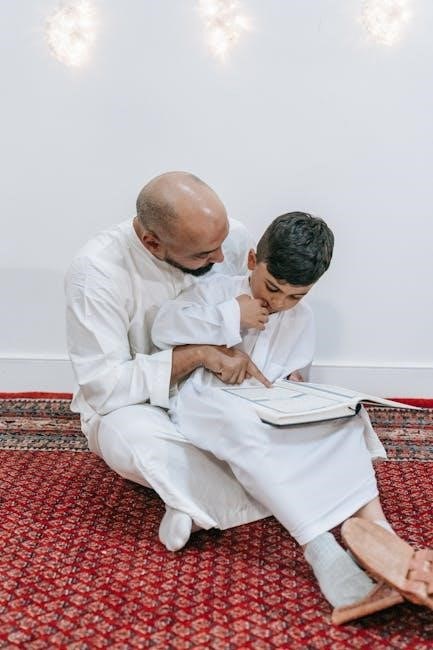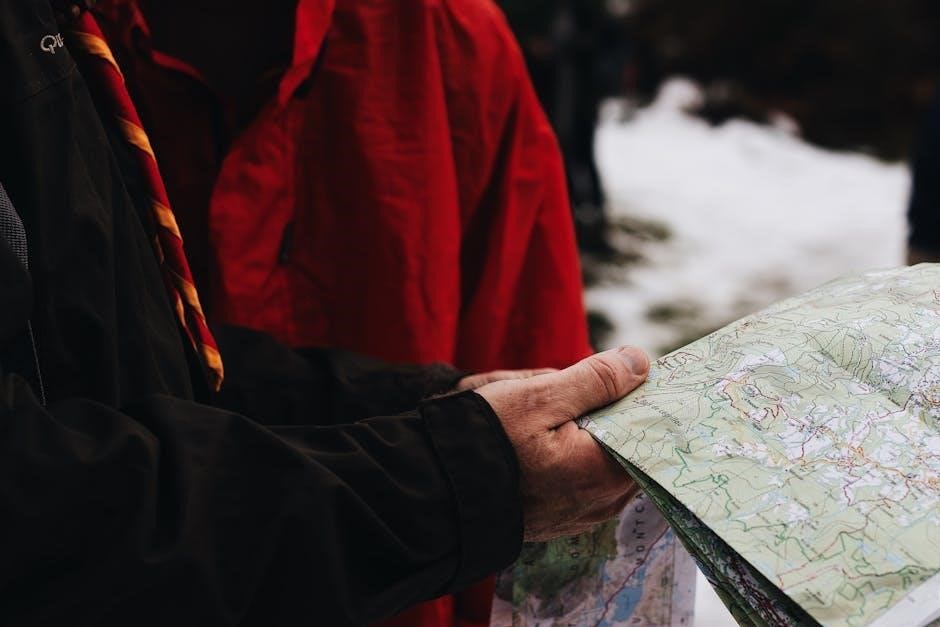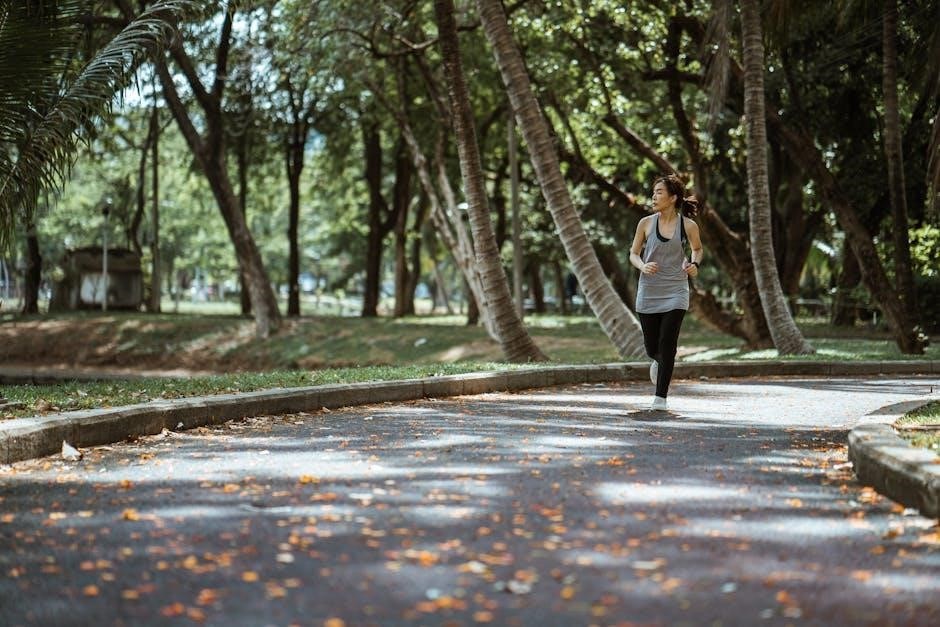trail guide to the body book

Trail Guide to the Body is a comprehensive‚ hands-on anatomy guide by Andrew Biel‚ designed for students and professionals in bodywork and healthcare. It offers detailed insights into palpation and surface anatomy‚ making it an essential resource for mastering musculoskeletal structures.
1.1 Overview of the Book
Trail Guide to the Body is a comprehensive‚ hands-on anatomy guide designed for students and professionals in bodywork‚ healthcare‚ and movement therapies. With 456 pages and 945 detailed illustrations‚ it systematically covers 162 muscles‚ 206 bones‚ 33 ligaments‚ and 110 bony landmarks‚ providing a clear and accessible map of the human body. The book emphasizes palpation techniques‚ enabling readers to confidently locate and understand musculoskeletal structures. Its user-friendly approach‚ combined with beautifully illustrated content‚ makes it an invaluable resource for learning surface anatomy and manual therapy skills. Additionally‚ it includes access to online study tools‚ such as palpation videos and interactive apps‚ enhancing the learning experience for students and practitioners alike.

Publication Details
The book is published by Books of Discovery‚ with ISBN-10: 0998785067 and ISBN-13: 9780998785066. The 6th edition was released in 2023‚ building on its legacy as a trusted resource.
2.1 ISBN and Publisher Information
Trail Guide to the Body is published by Books of Discovery‚ with ISBN-10: 0998785067 and ISBN-13: 9780998785066. The 6th edition‚ released in 2023‚ continues to be a trusted resource for anatomy education‚ widely used in various healthcare and bodywork fields. Its detailed content and illustrations make it a cornerstone for both students and professionals‚ ensuring accurate and comprehensive understanding of human anatomy. This edition reflects the publisher’s commitment to providing high-quality educational materials‚ solidifying the book’s reputation as a go-to reference for licensing exams and professional training programs.
Structure of the Book
Trail Guide to the Body features 456 pages and 945 illustrations‚ detailing 162 muscles‚ 206 bones‚ and more‚ organized by regional anatomy for a logical‚ hands-on learning experience.
3.1 Regional Anatomy Coverage
Trail Guide to the Body is organized by regional anatomy‚ providing a logical and systematic approach to learning. The book divides the body into key areas‚ such as the spine‚ upper and lower limbs‚ and pelvic girdle‚ with detailed coverage of each region. This structure allows students to focus on one area at a time‚ building a deep understanding of the musculoskeletal system. Each section includes clear descriptions of muscles‚ bones‚ ligaments‚ and bony landmarks‚ supported by illustrations and palpation techniques. This regional approach ensures that learners can easily identify and locate anatomical structures‚ making it an invaluable resource for both classroom and clinical settings.
3.2 Muscles‚ Bones‚ Ligaments‚ and Bony Landmarks
Trail Guide to the Body meticulously covers 162 muscles‚ 206 bones‚ 33 ligaments‚ and 110 bony landmarks. Each muscle is described in detail‚ including its origin‚ insertion‚ and action‚ while bones and ligaments are presented with precise anatomical locations. Bony landmarks are highlighted to aid in palpation. The book’s clear‚ concise descriptions and vivid illustrations make complex anatomy accessible. This thorough coverage ensures students and professionals can accurately identify and understand the interconnected structures of the body‚ providing a solid foundation for effective palpation and manual therapy techniques. The depth of information is tailored to meet the needs of various healthcare and bodywork modalities.

Special Features of the Book
Trail Guide to the Body features detailed illustrations‚ palpation techniques‚ and online study tools‚ enhancing learning and mastery of anatomy for students and professionals alike.
4.1 Detailed Illustrations
The book contains 945 detailed illustrations‚ covering 162 muscles‚ 206 bones‚ 33 ligaments‚ and 110 bony landmarks. These visuals provide a clear and precise map of the human body‚ aiding students in understanding complex anatomical structures. The lifelike and detailed drawings are designed to help learners identify and locate muscles‚ bones‚ and ligaments with ease. This visual approach makes it easier for massage therapists‚ physical therapists‚ and other healthcare professionals to master palpation techniques. The illustrations are user-friendly‚ offering a comprehensive guide that enhances the learning experience and ensures a deep understanding of surface anatomy.
4.2 Palpation Techniques
Trail Guide to the Body excels in teaching palpation techniques‚ a cornerstone of manual therapy. The book provides clear‚ step-by-step instructions for locating muscles‚ bones‚ and ligaments through touch. Designed for hands-on learners‚ it emphasizes the importance of surface anatomy in clinical practice. With detailed descriptions and illustrations‚ the guide helps students and professionals develop the skills needed to assess and treat effectively. The techniques are presented in a logical‚ progressive manner‚ making it easier to master complex palpation methods. This section is particularly valuable for massage therapists‚ physical therapists‚ and other bodywork professionals‚ offering practical tools to enhance their clinical expertise and confidence in patient care.
4.3 Online Study Tools
Trail Guide to the Body offers an array of online study tools to enhance learning. These include palpation videos‚ overlay images‚ and interactive mobile apps‚ all accessible with a unique code provided in the book. The tools are designed to complement the textbook‚ allowing students to practice palpation techniques and review anatomical structures anytime‚ anywhere. The online resources are particularly useful for visual and kinesthetic learners‚ providing dynamic ways to engage with complex anatomy. With these tools‚ students can deepen their understanding of the musculoskeletal system and improve their clinical skills effectively. The integration of digital and print materials makes Trail Guide to the Body a comprehensive learning package for modern anatomy education.

Target Audience and Benefits
Trail Guide to the Body is designed for students and professionals in massage therapy‚ physiotherapy‚ and healthcare. It aids in licensing exams and enhances practical skills for various modalities.
5.1 For Students and Professionals
Trail Guide to the Body is a versatile resource for both students and professionals in bodywork and healthcare. It serves as a primary textbook for students of massage therapy‚ physiotherapy‚ and occupational therapy‚ offering clear instructions and detailed content to master musculoskeletal anatomy. Professionals also rely on it as a reliable reference for refining palpation techniques and enhancing clinical practice. Its structured approach ensures that learners at all levels can deepen their understanding of surface anatomy‚ making it an indispensable tool for both education and professional development in hands-on therapies.
5.2 Benefits for Different Modalities
Trail Guide to the Body caters to various therapeutic modalities‚ ensuring its relevance across multiple disciplines. Massage therapists benefit from its palpation techniques‚ while physical therapists use it to refine their assessment skills. Yoga instructors and movement therapists rely on its anatomical insights to enhance alignment and posture correction. Occupational therapists find it useful for rehabilitation planning. Additionally‚ sports trainers and rehabilitation specialists utilize the book to understand musculoskeletal injuries and recovery strategies. Its broad applications make it a valuable resource for any professional or student involved in bodywork‚ movement‚ or healthcare‚ ensuring practical and applicable knowledge across diverse fields.
Reception and Reviews
Trail Guide to the Body is widely acclaimed as a best-selling textbook‚ praised by students and professionals alike for its clear‚ detailed approach to anatomy and palpation.
6.1 Industry Recognition
Trail Guide to the Body has garnered significant industry recognition‚ being named a top resource for anatomy education. It is required reading for Yoga Tune Up and The Roll Model Method trainings‚ and is recommended for state licensing exams by the NCBTMB and FSMTB. The book’s detailed illustrations and palpation techniques have earned it a reputation as a gold-standard textbook in the field of musculoskeletal anatomy. Its inclusion on official examination reference lists underscores its authority and reliability as a learning tool. This acclaim highlights its impact on both education and professional practice‚ solidifying its place as a trusted resource in the industry.
6.2 Student Feedback
Students widely praise Trail Guide to the Body for its clarity and effectiveness in learning anatomy. Many highlight its user-friendly format and detailed illustrations as key features that enhance understanding. The book’s step-by-step approach to palpation has been particularly praised for making complex concepts accessible. Students appreciate how the guide bridges theoretical knowledge with practical application‚ making it indispensable for both classroom and clinical settings. Feedback also emphasizes the value of accompanying study tools‚ such as flashcards and online resources‚ which reinforce learning. Overall‚ the book is consistently rated as an essential resource for students of massage therapy‚ physical therapy‚ and other bodywork modalities‚ helping them build confidence in their anatomical knowledge and skills.
Study Tools and Resources
Trail Guide to the Body offers extensive study tools‚ including flashcards‚ interactive apps‚ and palpation videos‚ to aid in mastering anatomy and palpation techniques effectively.
7.1 Flashcards
The Trail Guide to the Body Flashcards are a valuable resource for mastering musculoskeletal anatomy. Designed by Andrew Biel‚ they cover 162 muscles‚ 206 bones‚ and key ligaments‚ offering a portable study aid. Each card features clear‚ concise information with corresponding illustrations‚ making complex anatomy easy to memorize. Ideal for students and professionals‚ the flashcards are a popular complement to the textbook‚ enhancing self-study and exam preparation. They are particularly recommended for those in massage therapy‚ physical therapy‚ and occupational therapy programs. The flashcards are widely praised for their clarity and effectiveness‚ making them a must-have tool for anyone serious about understanding human anatomy.
7.2 Interactive Apps and Videos
The Trail Guide to the Body offers an array of interactive apps and videos to enhance learning; These digital tools provide step-by-step palpation techniques‚ overlay images‚ and 3D anatomy visuals‚ accessible anytime. Designed to complement the textbook‚ they allow students to deepen their understanding of musculoskeletal structures dynamically. The apps and videos are particularly useful for visual learners‚ offering a modern approach to anatomy education. They are available as part of the book’s online resources‚ making them an essential supplement for both classroom and self-study environments. These tools have been praised for their clarity and effectiveness in aiding mastery of surface anatomy and manual therapy skills.

Author Background
Andrew Biel‚ a licensed massage practitioner‚ founded Books of Discovery and authored Trail Guide to the Body and Trail Guide to Movement. His expertise in palpatory anatomy and teaching has made him a trusted educator in the field.
8.1 Andrew Biel’s Expertise
Andrew Biel is a licensed massage practitioner with extensive experience in anatomy education. He has taught at institutions like Boulder College of Massage Therapy and Seattle Massage School‚ and conducted Cadaver Studies for bodyworkers. His expertise in palpatory anatomy is evident in his books‚ which are widely recognized for their clear‚ hands-on approach. Biel’s ability to simplify complex anatomical concepts has made his resources indispensable for students and professionals alike. His work focuses on helping learners master surface anatomy and palpation skills‚ essential for effective manual therapy and bodywork practices. His contributions have significantly influenced anatomy education across various therapeutic modalities.

Editions and Updates
Trail Guide to the Body has undergone several editions‚ with the 6th edition released in 2023. It includes updated content to enhance understanding of surface anatomy and palpation techniques.
9.1 Major Edition Updates
Trail Guide to the Body has evolved significantly across its editions. The 6th edition‚ released in 2023‚ introduces enhanced illustrations and expanded coverage of surface anatomy. It includes updated palpation techniques and additional content on ligaments and bony landmarks‚ improving clarity for students. Digital resources‚ such as interactive apps and videos‚ have also been expanded to support learning. These updates ensure the book remains a leading resource for anatomy education‚ aiding both students and professionals in mastering musculoskeletal anatomy effectively.

Role in Education and Licensing
Trail Guide to the Body is a recommended textbook for licensing exams‚ including those by NCBTMB and FSMTB‚ making it a cornerstone in anatomy education and professional certification.
10.1 Textbook for Licensing Exams
Trail Guide to the Body is a highly recommended textbook for state licensing exams‚ particularly for massage therapy and bodywork professionals. It is one of five books officially listed by the National Certification Board for Therapeutic Massage and Bodywork (NCBTMB) and the Federation of State Massage Therapy Boards (FSMTB). The book’s detailed illustrations and clear instructions on palpation and musculoskeletal anatomy make it an invaluable resource for exam preparation. Its comprehensive coverage of the body’s structures ensures that students are well-equipped to meet the rigorous standards of professional licensing exams. This recognition underscores its role as a trusted educational tool in the field.

User Guide and Tips
The Trail Guide to the Body includes a user guide with step-by-step navigation and tips for maximizing learning. Access online tools like palpation videos and apps.
11.1 Navigating the Book
Navigating Trail Guide to the Body is streamlined for ease. The book is divided into clear sections‚ each focusing on specific anatomical regions. Detailed tables of contents and cross-references guide readers seamlessly through the text. Anatomical descriptions are paired with corresponding illustrations‚ enhancing comprehension. The spiral-bound format allows the book to lie flat‚ making it practical for hands-on use. For digital learners‚ online resources like palpation videos and interactive apps complement the physical text‚ offering a multi-dimensional learning experience. Icons and color-coded sections further simplify navigation‚ ensuring quick access to essential information. This intuitive design caters to both visual and kinesthetic learners‚ fostering an efficient study process;
11.2 Maximizing Learning
To maximize learning with Trail Guide to the Body‚ combine thorough reading with hands-on practice. Use the detailed illustrations to visualize structures before attempting palpation. Leverage the online study tools‚ such as palpation videos and interactive apps‚ to reinforce concepts. The spiral-bound format allows the book to remain open during practice‚ making it ideal for practical application. Regular review of muscle groups and bony landmarks ensures long-term retention. For kinesthetic learners‚ pairing the text with flashcards enhances memorization. Additionally‚ the book’s regional anatomy approach encourages focused study sessions‚ helping learners master one area before moving to the next. This structured yet flexible approach makes it an indispensable resource for anatomy education.

Comparison with Other Anatomy Guides
Trail Guide to the Body stands out for its hands-on approach‚ detailed palpation techniques‚ and comprehensive coverage of 162 muscles‚ 206 bones‚ and 110 bony landmarks‚ surpassing many anatomy guides in practicality and depth.
12.1 Unique Aspects
Trail Guide to the Body distinguishes itself with its hands-on‚ practical approach to anatomy‚ focusing on palpation techniques and surface anatomy. Its detailed coverage of 162 muscles‚ 206 bones‚ 33 ligaments‚ and 110 bony landmarks‚ combined with 945 illustrations‚ provides unparalleled clarity. The book’s unique structure‚ designed for easy navigation‚ makes it a preferred resource for both students and professionals. Additionally‚ its integration of online study tools‚ such as palpation videos and interactive apps‚ enhances learning and accessibility. Unlike other anatomy guides‚ its emphasis on real-world application and user-friendly design sets it apart as an indispensable tool for bodywork and healthcare education.

Cultural and Academic Impact
Trail Guide to the Body has significantly influenced anatomy education‚ becoming a standard textbook for bodywork and healthcare training programs worldwide‚ and shaping modern palpation techniques.
13.1 Influence on Anatomy Education
Trail Guide to the Body has revolutionized anatomy education by providing clear‚ accessible content. Its detailed illustrations and palpation techniques have become a cornerstone for students and professionals‚ fostering a deeper understanding of musculoskeletal anatomy. The book’s structured approach has set a new standard in educational resources‚ making complex concepts easier to grasp. By integrating hands-on learning with visual aids‚ it has transformed how anatomy is taught and learned‚ impacting curricula globally. This influence extends beyond classrooms‚ shaping practical skills for therapists and healthcare providers‚ ensuring a lasting legacy in anatomy education.
The Future of Trail Guide to the Body
Trail Guide to the Body continues to evolve with updated editions‚ incorporating new technologies and learning tools. Future developments aim to enhance accessibility and deepen anatomical understanding globally.
14.1 Upcoming Developments
Trail Guide to the Body is expected to release new editions with enhanced content‚ including updated illustrations and expanded coverage of muscles‚ bones‚ and ligaments. Future editions will likely integrate more digital tools‚ such as advanced interactive apps and videos‚ to improve learning outcomes. The sixth edition already boasts 456 pages and 945 illustrations‚ covering 162 muscles‚ 206 bones‚ 33 ligaments‚ and 110 bony landmarks. Upcoming developments may include greater emphasis on surface anatomy and palpation techniques‚ ensuring the book remains a leading resource for anatomy education. These updates aim to deepen students’ understanding and mastery of musculoskeletal anatomy‚ solidifying its role as a cornerstone in healthcare and bodywork training.
Trail Guide to the Body is a cornerstone for anatomy education‚ offering unparalleled insights into musculoskeletal structures. Its trusted content and tools make it indispensable for students and professionals alike.
15.1 Final Thoughts
Trail Guide to the Body stands as a pivotal resource in anatomy education‚ bridging theory and practice with its detailed illustrations and palpation techniques. It has become a trusted companion for students and professionals‚ aiding in the mastery of musculoskeletal anatomy. The book’s ability to simplify complex structures ensures its relevance across various modalities. With its comprehensive coverage and accessible study tools‚ it remains a cornerstone for those seeking to deepen their understanding of the human body. Its enduring popularity underscores its value as an essential tool for both learning and professional growth in the field of bodywork and healthcare.



Leave a Reply
You must be logged in to post a comment.